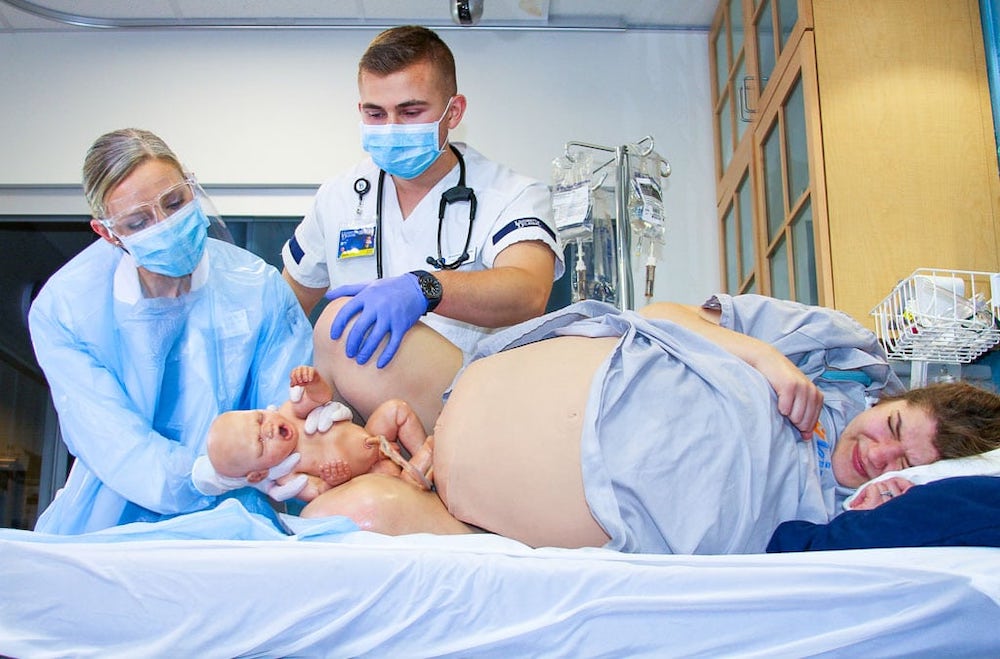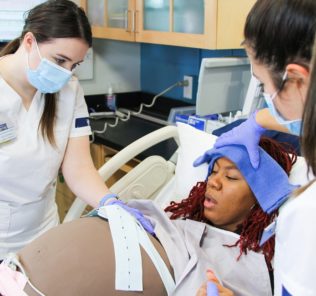Wearable Device Technology for Enhancing Clinical Simulation
Healthcare simulation continues to evolve with new technologies and methods that only increase the impact on learning in the clinical setting. Complex healthcare simulations are clinically technical in nature, but the medical simulation scenarios portrayed can be emotional as well. Realistically, including this emotion in healthcare simulation is challenging with a manikin or task trainer. This HealthySimulation.com article explains how high-fidelity wearable device technology makes including both factors possible.
“Wearables” in healthcare simulation is a blanket term that includes wearable devices such as vests or skins that can be used for IV training, suturing, wound dressing, or breast examination. The term also refers to virtual reality goggles or headsets worn by the learner to take part in augmented or extended reality scenarios. Throughout this article, the wearables discussed are devices worn on a person’s body or overlayed onto a body to enhance realism. Some are low-fidelity and others include high-fidelity components that are typically only associated with a healthcare simulation manikin.
High-fidelity manikins continue to improve in realism and the latest models include body movement and facial expressions, but they are still not “human.” Yet, one of the most recent and impactful additions to the pool of clinical simulation technology is the high-fidelity wearable device that incorporates the human component of the wearer.
Sponsored Content:
Ultimately, wearables are not new. In fact, have been used for some time in military training and trauma simulations. The most common ones are made of latex, silicone sleeves, or overlays that can be worn by an actor or simulated participant to depict wounds (such as burns, lacerations, or avulsions).
In specialized trauma clinical simulations, sleeves can also be used to depict amputations of varying degrees. Some of these are designed to be worn by real amputees over the stump or may be overlayed on an intact limb. Techline Trauma, Simulaids, and Strategic Operations are a few of the companies that offer these types of clinical simulation devices. Their wearables depict traumatic wounds with a great deal of realism and may include bleeding, the presence of foreign bodies, bones, or even intestinal avulsions. These devices have been used extensively to train trauma personnel for stabilization in the field and in multiple casualty scenarios.
For routine training in academia or in the clinical healthcare setting, wearables may not be as appropriate. Instead, for general assessment and illness management of the clinical patient, the healthcare simulation educator typically relies on task trainers, low and high-fidelity manikins, and standardized patients along with moulage.
Wearables used most often in healthcare simulation are those of small-area wounds, abrasions, or burns that can be created with moulage and worn over and over by either manikins or standardized patients. These are effective and valuable for realism but do not use high-fidelity technology. However, there are now wearables on the market that enhance realism by combining personal interaction and advanced technology for the learner.
Sponsored Content:
The pioneering manufacturer bringing this technology to hospital and academic clinical simulation programs is Avkin. The company has created high-fidelity wearables to aid in the assessment of various body systems with much more realism than even the most sophisticated high-fidelity manikin can provide. This realism is due to the standardized patient’s ability to react to the learner while wearing the device and respond appropriately to interventions via haptic cues.
Wearables Use Across Clinical Simulation Scenarios
Often, when the healthcare simulation educator wants to combine the technology or practicality of a simulator with the realism of the standardized patient, they must design a hybrid scenario. Hybrid scenarios combine the high-fidelity manikin or task trainer with a standardized patient to increase communication and emotional response – and can be very successful. For example, one can have a standardized patient wear a gravid abdomen (created with pillows or latex or silicone overlay) and portray the obstetric patient in labor or with some complication such as preeclampsia.
At the point of delivery (or patient decline if preeclampsia), the learners then move to the manikin to complete the simulation. Learners evaluating these scenarios typically report that much more realism is achieved by having the ability to talk with, touch, and otherwise interact with a live patient.
For the obstetric scenario described, Avkin’s wearable birthing device, AvBirth makes this possible without having to interrupt the simulation to move to a manikin. The AvBirth device is worn over the SP’s abdomen and includes a pelvis for delivery. The device also has reusable bags for fluids and includes a haptic feedback system so that the wearer can respond appropriately to contractions and birth as they occur to enhance realism.
This system also allows the learner to manage all aspects of labor and delivery, including coaching the patient and family members and practicing therapeutic communication. They are able to develop higher-level skills of self-regulating their own emotions and fears to maintain control in a chaotic situation through AvBirth’s use.
Other Uses of Wearable Device Technology
Wearable technology extends beyond obstetric training. Avkins AvTrach model includes antimicrobial simulated mucus and a carina sensor that cues the standardized patient to cough when reached with a suction catheter. The device also has realistic lung sounds and a pressure sensor that cues the wearer if the learner applies too much pressure to the tracheostomy faceplate (which would be painful to a patient), and the wearer can respond appropriately.
In addition to the AvTrach and AvBirth devices, Avkin’s line includes a wearable trainer for central line insertion, indwelling urinary catheter insertion, chest tube insertion/management, IV insertion, and wound care. All have haptic feedback systems incorporated. Each of these devices can be adjusted to fit and may be worn by either males or females of any adult age.
Overall, the use of these high-fidelity wearable devices makes immersing learners in a clinical simulation experience even easier. Often in debriefing, learners will say that they would react differently with a live patient than they do in simulation because they know the manikin is “not a real person.” These wearables help to reduce this disassociation. The use of standardized patients to aid in learning and realism is invaluable and Avkin has made it possible to merge high-fidelity electronics with the human connection.
With the technology available in high-fidelity wearable devices, the medical simulation educator can bridge the gap between computerized physiology an actual human response. Sometimes the most difficult hurdle across healthcare simulation is the ability of the learner to suspend disbelief. With these types of devices one can remove or at least lower that hurdle and enhance the impact of the simulation learning experience.
Learn More About Wearable Healthcare Simulators
Tina Hayes, MSN, RN, RNC-OB is a nurse with over 20 years of experience in practice and staff development. She is certified in Inpatient Obstetrics and Electronic Fetal Monitoring and is an instructor of Advanced Life Support in Obstetrics. She is also an instructor of BLS and ACLS.
She began her career in general medical/surgical nursing and became an obstetrics nurse in 2004. She has held positions as a staff nurse, charge nurse, preceptor, nurse manager, and clinical educator. Hayes became involved in simulation while working as a nurse manager and training staff in postpartum hemorrhage response and drills. The visual enhancement provided by simulation and the benefit of hands-on practice was inspiring.
She moved into a full-time position as a simulation educator in 2017 at Northeast Georgia Medical Center where a large educational and simulation center was built in 2019 to support a new Graduate Medical Education program. She served as the obstetric subject matter expert in simulation and participated in the development of a mobile simulation unit at NGHS, making simulation education available to areas throughout northeast Georgia.
Hayes moved to Miami, FL in 2022 and currently works as a Simulation Educator at Miami University’s School of Nursing and Health Studies.
Sponsored Content:


















